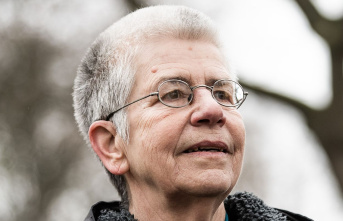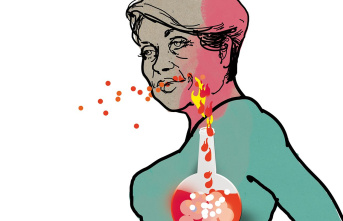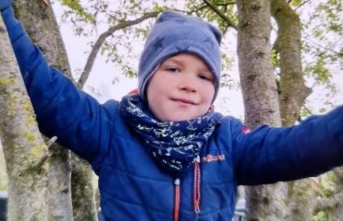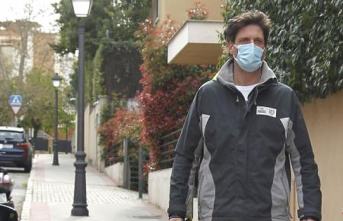The museums linked to the Church in Valencia hide, in the heart of the city and a short distance from each other, authentic artistic gems. For example, a historical cloak of the Virgen de los Desamparados, a poster announcing the Canonical Coronation of 1923 by Josep Renau, the largest processional Monstrance in the world and three works by El Greco in the same exhibition space, and which can be visited this Wednesday, International Museum Day.
To celebrate Museum Day, the Parish Museum of San Nicolás -located at Calle Caballeros, 35- has organized special visits, with a tour that includes unpublished spaces, free access until full capacity is reached and always with prior reservation, accompanied by a expert guide and a restorer, on May 18 (at 5:00 p.m.), 19 (at 12:00 p.m.) and 20 (at 5:00 p.m.).
Reservations can be made by email to visitsculturales@mentavalencia.com.
The Hospital Joint Museum of San Juan del Hospital -at Calle Trinquete de Caballeros, 5- has organized this Wednesday, May 18, an Open Day of the Medieval Cemetery, which can be visited freely and free of charge from 5:00 p.m. :30 a.m. to 9 p.m., with showings every thirty minutes.
The Mariano Museum of the Virgen de los Desamparados de Valencia (MUMA), located in the Basilica and with access from the Plaza de la Almoina, exhibits more than 400 pieces of art linked to the Patron Saint of the Valencians, among them, the mantle offered in 1915 by the chief chaplain of the Basilica, Germán Mata, and the poster announcing the festivities that were organized in May 1923 on the occasion of the Canonical Coronation of the image.
The Chaplain's mantle is embroidered by the Daughters of Charity of the Casa de la Beneficencia de Valencia in relief on silver tissue, with pearls and crystal. It is one of the historical cloaks of the patron saint and in its drawing, neoclassical style, the coats of arms of Spain and Valencia stand out.
In addition, the mantle “was worn by the original image of the Virgin when she left Valencia City Hall after the end of the Civil War to return to her chapel after remaining hidden during the years that the war lasted. The piece was not destroyed since when the war began it was being restored in the Casa Llana workshop”, explained Mª Ángeles Gil, head of the MUMA.
You can also see the poster designed by the Valencian poster artist and painter Josep Renau Berenguer, when he was only fifteen years old, and which he submitted to the contest for posters announcing the festivities of the Pontifical Coronation of the Virgen de los Desamparados. This particular tribute by the illustrator to the Mare de Déu was one of the eleven posters presented to the call, with the motto «Valencia», and represents the floral offering of a Valencian and a Valencian to the 'Mareta', with an «art decó” typical of those years. Renau did not win this contest -the winning poster was made by Vicente Canet- but in a few years his artistic career took off in different countries.
The MUMA can be visited from Monday to Friday, from 10 a.m. to 2 p.m. For more information and group reservations, you can contact us by calling 96 391 92 14 (extension 5) and emailing muma@basilicadesamparados.org.
Near the Basilica, in the Museum of the Cathedral of Valencia, open from Monday to Saturday from 10:30 a.m. to 6:30 p.m., and on Sundays from 2:00 p.m. to 5:30 p.m., stands out the wooden sculpture of “El mal ladrón”, made by Juan Muñoz , 16th century; the original sculptures of the Puerta de los Apóstoles; the space occupied in the 15th century by the library of the Borgias; “The Doubt of Santo Tomás”, a work by Marçal de Sax, from the year 1400, the oldest in the Cathedral; and pieces by prominent artists such as Juan de Juanes, Vicente Macip and Vicente López, among others.
Likewise, the Museum exhibits the processional Monstrance of the Cathedral, the largest in the world, which is held in procession on Corpus Christi day. A part of the Seo's artistic collection is also distributed in its chapels, as is the case of the two paintings painted by Francisco de Goya on San Francisco de Borja.
The Museum of the Real Colegio Seminario de Corpus Christi de Valencia, El Patriarca, which can be visited from 11 a.m. to 1:30 p.m. and from 4:30 p.m. to 8 p.m., Monday through Friday, and from 11 a.m. to 1:30 p.m. it is the only one in Valencia with three works by El Greco.
Its pieces include the “Christ before the Flagellation” or “Christ the Man of Sorrows”, the work of Jan Gossaert, known as Mabuse, from the 16th century; the reduced version of the Triptych of the Passion, by Dirk Bouts; and he can also enjoy works by Juan de Juanes, Francisco Ribalta and Juan Sariñena, as well as two excellent copies by Caravaggio. The ticket includes a visit to the Chapel of the Monument, where you can see the tapestries restored by the Royal Tapestry Factory.
Outside Valencia, in the Valencian town of Benigànim, you can visit the "House of Beata Inés Memories", in the monastery of the Agustinas Descalzas, a space that collects objects related to the life and work of Josefa Teresa Albiñana Gomar (Benigànim, 1625- 1696), who was the first Valencian woman beatified in 1888.
This "House of Memories" opens on the second and fourth Sunday of each month. Therefore, this coming Sunday, May 22, it can be visited for free, from 10 a.m. to 1 p.m., on a tour explained by a guide. More information on the phone 962 92 02 94 and in the email info@beatainesbeniganim.com.
Other museum spaces in the diocese, not dependent on the Archbishopric or on parishes or temples but with a close connection due to their theme, are the Palau Ducal dels Borja de Gandía, where you can see the Borja oratory and the death mask of San Francisco de Borja, and the "Salvador Caurín" Marine Holy Week Museum in Valencia, at Calle Rosari, 3, del Cabanyal, with a collection of banners, images and traditional costumes of the Brotherhoods and Brotherhoods.
2












